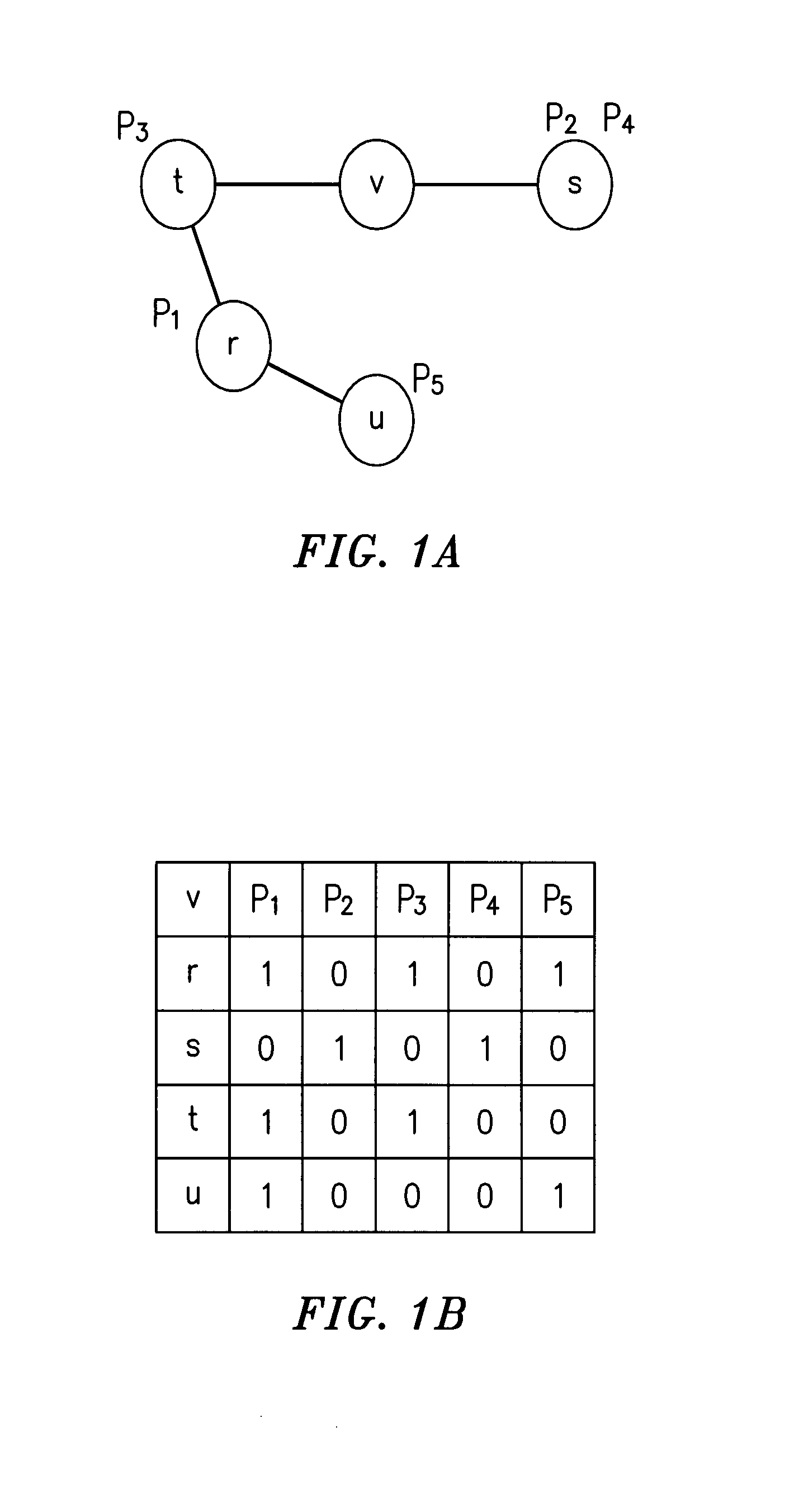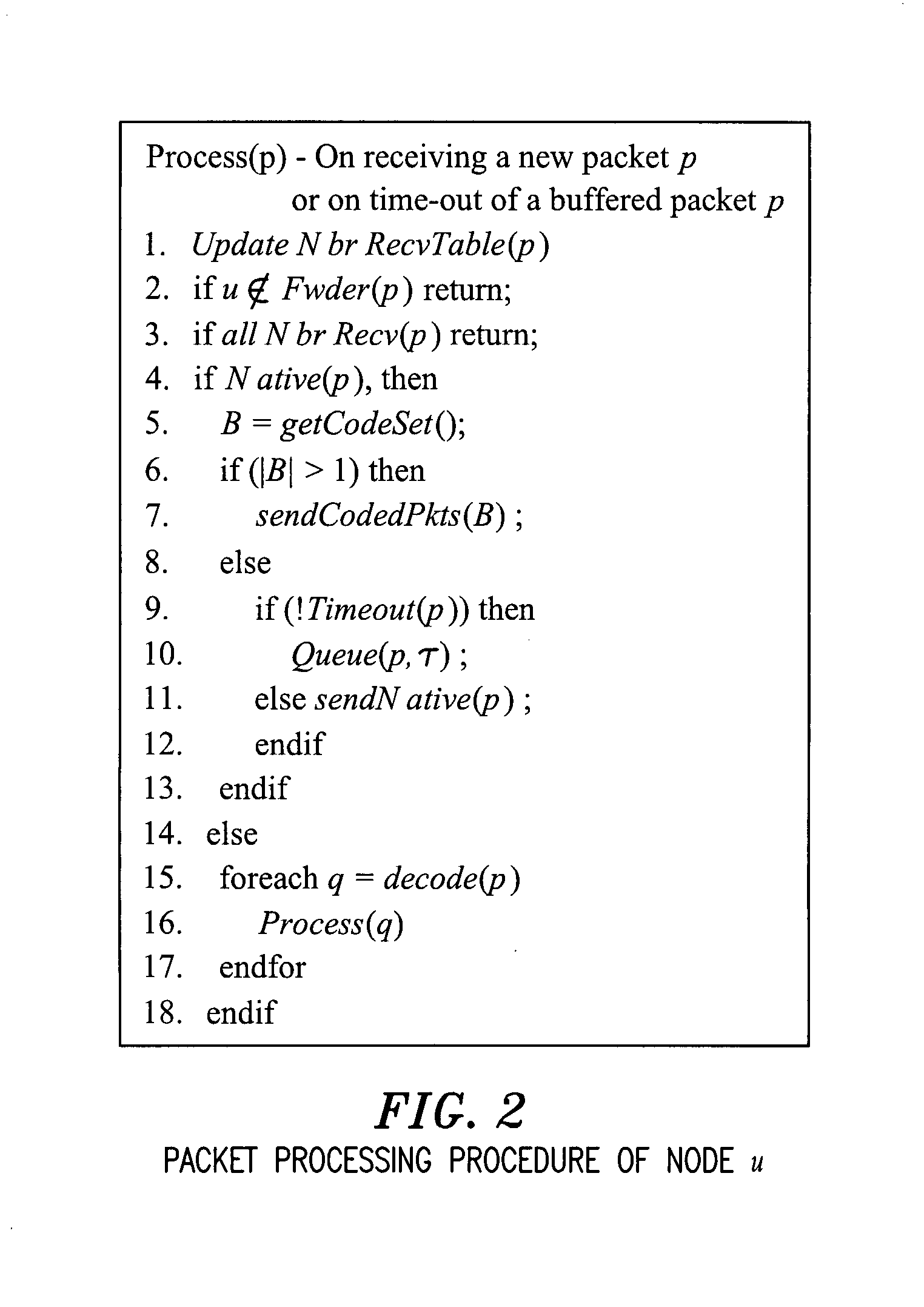Apparatus and method for practical and efficient broadcast in mobile ad hoc networks
a mobile ad hoc network and broadcast technology, applied in the field of telecommunications, can solve the problems of limiting coding gains, difficult to solve in a distributed manner, difficult to fine-tune the forwarding probability in probabilistic approaches, etc., and achieve the effect of reducing the number of transmissions
- Summary
- Abstract
- Description
- Claims
- Application Information
AI Technical Summary
Benefits of technology
Problems solved by technology
Method used
Image
Examples
Embodiment Construction
[0017]An exemplary embodiment of the invention will now be described while referring to the figures, several of which may be simultaneously referred to during the course of the following description.
[0018]We first describe the partial dominant pruning (PDP) algorithm and then describe the gains that can be achieved by adding coding algorithms to a deterministic broadcast approach such as PDP.
[0019]We now describe the PDP algorithm. Let N (u) represent a set of neighbors of node u, including u and let N (N (u)) represent the two-hop neighborhood of node u. Let u send a broadcast packet to v, choosing v as its forward node; v then selects a forward list, which contains the minimum number of broadcast nodes that would re-broadcast packets to cover all nodes in its 2-hop neighborhood, N (N (v)). Among nodes in N (N (v)), nodes in N (u) have already received the packet while nodes in N (v) will receive the packet when v broadcasts it. Further, neighbors of nodes common to nodes in N (u) ...
PUM
 Login to View More
Login to View More Abstract
Description
Claims
Application Information
 Login to View More
Login to View More - R&D
- Intellectual Property
- Life Sciences
- Materials
- Tech Scout
- Unparalleled Data Quality
- Higher Quality Content
- 60% Fewer Hallucinations
Browse by: Latest US Patents, China's latest patents, Technical Efficacy Thesaurus, Application Domain, Technology Topic, Popular Technical Reports.
© 2025 PatSnap. All rights reserved.Legal|Privacy policy|Modern Slavery Act Transparency Statement|Sitemap|About US| Contact US: help@patsnap.com



